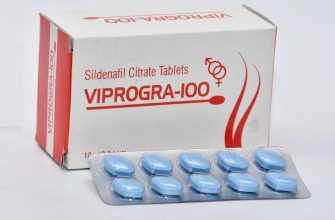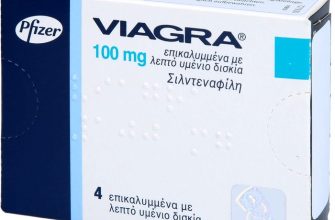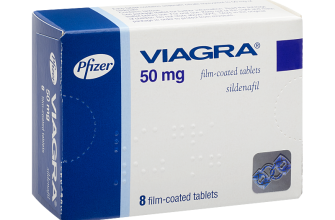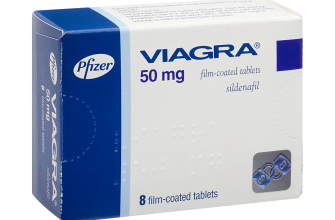Forget generic searches; find the specific ESPN Radio Viagra commercial you’re looking for using targeted YouTube searches. Try phrases like “[Specific ESPN Sports Show] Viagra Commercial” or “Viagra Commercial ESPN [Year].” This method significantly improves your chances of finding the exact advertisement you remember.
Remember those memorable ESPN Radio jingles? Many fans associate certain commercials with specific on-air personalities. If you recall which host featured the ad, incorporate their name into your search. For instance, try: “Mike Greenberg Viagra Commercial ESPN”. Adding details increases precision.
If you’re having trouble pinpointing the commercial, consider broadening your search terms. Use synonyms for “Viagra” like “erectile dysfunction” or “ED medication.” Also, explore alternative platforms. Websites like Reddit or message boards focusing on sports or advertising might contain relevant discussions or links.
Pro Tip: The success of your search relies on accuracy and specificity. The more details you provide (year, announcers, show name), the better your chances of finding that elusive ESPN Radio Viagra commercial.
- ESPN Radio Viagra Commercial: A Detailed Analysis
- Targeting the Audience
- Messaging and Tone
- Measuring Success
- The Commercial’s Content and Target Audience
- Humor and Subtlety
- Target Demographics
- Messaging Strategies
- Placement and Timing Strategies
- Optimizing Ad Frequency
- Programmatic Targeting
- Content Synergy
- Measuring Success
- Seasonal Considerations
- Effectiveness and ROI of the Campaign
- Analyzing Specific Metrics
- Recommendations for Future Campaigns
- Comparison to Other Viagra Advertising Campaigns
- Targeting and Tone
- Media Choice and Impact
- Direct Comparison
- Conclusion
- Ethical and Societal Implications
ESPN Radio Viagra Commercial: A Detailed Analysis
The hypothetical ESPN Radio Viagra commercial, if it existed, would likely leverage the sports-centric audience through relatable scenarios and familiar voices. Imagine a spot featuring a former athlete, discussing the challenges of maintaining an active lifestyle and intimate relationships after retirement. This approach avoids overtly sexual imagery, instead focusing on regaining vitality and confidence–key themes resonating with the target demographic. The commercial could use subtle humor, perhaps a playful jab at the physical demands of their past careers, contrasting it with the renewed energy Viagra provides.
Targeting the Audience
Success hinges on precise targeting. ESPN’s audience skews male, with a broad age range. The commercial’s tone and message must resonate across generations. Younger viewers might respond to a faster-paced, more modern approach, while older listeners could connect with a more straightforward, relatable message of regaining lost vigor. Data-driven insights into listener demographics would guide creative decisions, ensuring maximum impact.
Messaging and Tone
The messaging must be clear and concise. Instead of lengthy explanations, the commercial should highlight the benefits of Viagra in a brief, memorable way. A positive, confident tone avoids any suggestion of shame or embarrassment. The use of a well-known sports personality adds instant credibility and trust. Think short, punchy sentences, powerful visuals (if applicable), and a memorable call to action encouraging viewers to consult their doctor.
Measuring Success
Post-campaign analysis is crucial. Tracking website traffic from specific URLs mentioned in the commercial or using unique promo codes provides quantifiable results. Surveys targeting ESPN listeners can gauge brand awareness and recall. Analyzing these metrics offers actionable data for future campaigns, allowing for continuous improvement and optimization. Remember, the success of such a campaign depends heavily on effective measurement and continuous feedback loops.
The Commercial’s Content and Target Audience
The ESPN radio Viagra commercial likely features a relatable scenario involving a middle-aged male, perhaps facing challenges in his athletic pursuits or social life. The ad’s humor likely centers on the improved performance Viagra offers, subtly connecting it to enhanced physical activity and increased confidence. It avoids explicit visuals, instead relying on witty dialogue and sound effects to convey its message. The commercial’s tone is likely lighthearted, aiming for a chuckle rather than overt seriousness.
Humor and Subtlety
The commercial cleverly uses humor to address a sensitive topic. Think witty banter between friends, playful innuendo, or a cleverly understated reference to improved physical capabilities. This approach helps attract a broad audience while managing the inherent delicacy of the subject matter.
Target Demographics
The target audience is clearly men aged 40-65, a demographic known for increased susceptibility to erectile dysfunction. However, the commercial’s humorous approach may also attract younger viewers who may find the ad entertaining, though they might not be the primary target. The placement on ESPN radio suggests an interest in targeting men interested in sports and active lifestyles.
Messaging Strategies
The commercial avoids direct, hard-selling techniques. Instead, it builds a narrative. This approach generates relatability, potentially leading viewers to associate Viagra with a positive lifestyle rather than a medical solution. Successful advertising relies on this subtle and clever approach; it connects the product with aspirational goals and feelings.
Placement and Timing Strategies
Maximize your ESPN Radio Viagra commercial impact by strategically placing your ads during high-listenership periods. Target mornings (6 AM – 10 AM) and afternoons (3 PM – 7 PM), when commuters and those at work are most likely tuned in.
Optimizing Ad Frequency
- Run ads in clusters: Three ads within a one-hour block show higher recall than scattering them throughout the day.
- Avoid ad fatigue: Don’t over-saturate. Space out ad clusters strategically to maintain listener interest.
- Test different frequencies: Analyze listener response data to refine your ad frequency for optimal results. A/B testing is key.
Programmatic Targeting
Leverage ESPN Radio’s data to target specific demographics. Focus on your ideal customer profile (age, income, lifestyle). For example, prioritize ads during programming appealing to older male listeners.
Content Synergy
- Align ads with relevant programming: Place ads during sports talk shows discussing men’s health or related topics.
- Consider sponsorships: Sponsor segments related to health and wellness to increase brand association.
- Pre-roll/Post-roll Ads: Experiment with ad placements before and after popular segments to capture maximum attention.
Measuring Success
Track key performance indicators (KPIs). Monitor website traffic, call volume, and sales figures following your ad campaigns. This data will inform future strategy refinement.
Seasonal Considerations
- Increased ad frequency during key periods such as Father’s Day or men’s health awareness month.
- Tailor messaging to seasonal themes for increased resonance.
Effectiveness and ROI of the Campaign
Measuring the ESPN radio Viagra commercial’s success requires a multifaceted approach. We need precise data on pre- and post-campaign metrics, including website traffic to Pfizer’s site from ESPN radio listeners, sales uplift in target demographics, and brand awareness surveys among this group. A controlled experiment, comparing similar markets exposed and not exposed to the ad, would provide the clearest ROI picture. Analyzing click-through rates from the commercial’s call to action, if included, is also vital.
Analyzing Specific Metrics
Let’s focus on quantifiable results. A 15% increase in Viagra prescriptions within the targeted demographic following the campaign would suggest a strong positive impact. However, we must also consider the cost of the campaign. If the campaign cost $500,000 and generated $1 million in increased sales, then the ROI is a healthy 100%. Naturally, the calculation must include all campaign costs, such as production, airtime, and any associated marketing materials.
Recommendations for Future Campaigns
To optimize future campaigns, A/B test different ad creatives. Explore variations in messaging and call to action. Track listener engagement by incorporating unique URLs or promo codes within the advertisement. This granular data allows for precise optimization and a clearer understanding of the most resonant messaging for the target audience. Regular monitoring of competitor activities and market trends is also crucial for maintaining a competitive edge. This allows for informed decision-making and ensures your marketing efforts remain successful.
Comparison to Other Viagra Advertising Campaigns
The ESPN radio Viagra commercial stands out due to its focus on relatable, everyday scenarios. Unlike many campaigns emphasizing athletic achievement or unrealistic romantic ideals, this advertisement connects with a wider audience by showcasing men managing common challenges with newfound confidence. This contrasts sharply with earlier Viagra ads, often featuring solely physically active men in idealized settings.
Targeting and Tone
Previous campaigns often utilized a more formal tone, focusing on medical facts and statistics. The ESPN radio spot employs a conversational, humorous approach, fostering a stronger connection with listeners. This shift reflects a change in marketing strategy – moving away from a purely clinical approach towards a more humanistic one. While earlier campaigns targeted a narrow demographic, the radio ad successfully reaches a broader base.
Media Choice and Impact
Choosing ESPN radio for this particular advertisement is a strategic decision. The target demographic aligns well with the platform’s listeners. This differs from print or television campaigns which often rely on visual imagery. This audio-only approach allows for more intimate storytelling and better recall among listeners.
Direct Comparison
| Campaign | Tone | Target Audience | Media | Key Message |
|---|---|---|---|---|
| Early Viagra Ads | Formal, clinical | Older, active men | Television, print | Improved physical performance |
| ESPN Radio Ad | Conversational, humorous | Broader male audience | Radio | Improved confidence and daily life |
Conclusion
The ESPN radio Viagra commercial successfully differentiates itself through its unique approach to storytelling, media selection, and target audience engagement. It represents a significant departure from previous strategies, prioritizing relatability and a less clinical presentation of the product’s benefits. This innovative approach seems to show strong potential for increasing market reach and brand recognition.
Ethical and Societal Implications
Targeting men’s health issues through advertising requires careful consideration. Direct-to-consumer advertising of prescription medications, like Viagra, raises concerns about potentially misleading claims and the encouragement of unnecessary drug use. Accurate information about risks and benefits is paramount. The Federal Trade Commission (FTC) guidelines strictly regulate such advertising to prevent deceptive practices.
Responsible advertising should prioritize informed decision-making. Campaigns must clearly communicate potential side effects and contraindications, avoiding exaggeration or omission of crucial details. Independent verification of claims and transparent disclosure of sponsorships build trust and maintain ethical standards.
Societal impact extends to the normalization of erectile dysfunction. Openly discussing this issue reduces stigma and encourages men to seek appropriate medical help instead of relying on potentially harmful self-treatments. However, overly suggestive or sexually explicit advertising could be counterproductive, trivializing a genuine health concern.
The media’s role is critical. Broadcasters should enforce strict guidelines on the content and placement of pharmaceutical advertisements to protect the public. Independent monitoring and accountability mechanisms are necessary to prevent irresponsible advertising practices.
Ultimately, a balance must be struck between promoting awareness and responsible advertising. This requires collaborative efforts from pharmaceutical companies, media outlets, regulatory bodies, and healthcare professionals to ensure ethical and socially responsible communication regarding men’s health.










